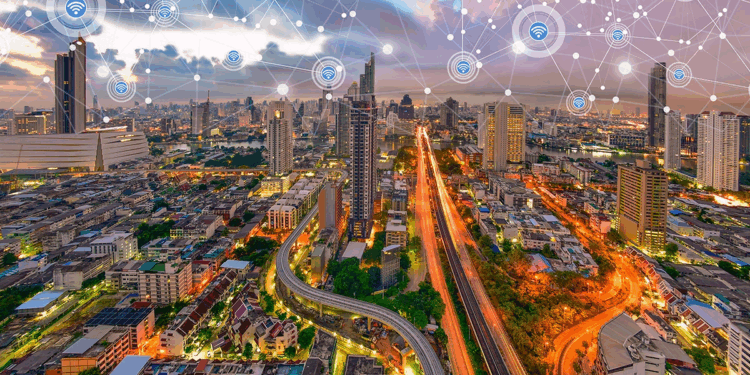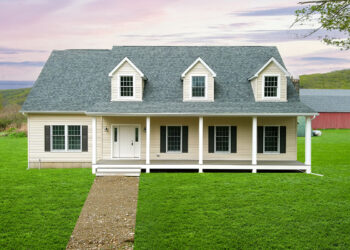Architects’ Critical Role in Smart Cities
The concept of a smart city has evolved from a futuristic sci-fi vision into a tangible goal for urban planners and governments worldwide. At its core, a smart city uses technology and data to improve the quality of life for its residents, enhance sustainability, and optimize the efficiency of urban services. From intelligent traffic management systems that reduce congestion to sensor networks that monitor air quality, technology is the backbone of this urban transformation. However, a smart city is more than just a collection of interconnected gadgets; it is a complex ecosystem where technology, people, and the built environment must coexist harmoniously. While technologists and data scientists are often seen as the primary drivers of this movement, a crucial, often underestimated, player stands at the intersection of technology and humanity: the architect.
Architects’ role in smart city planning is not merely to design smart buildings, but to act as orchestrators who ensure that technology serves human needs rather than the other way around. They are the bridge between the digital layer and the physical layer of the city, ensuring that the integration of technology is seamless, aesthetically pleasing, and, most importantly, centered on people. This deep dive will explore the indispensable and multifaceted role of architects in shaping the smart cities of tomorrow, highlighting their unique contributions that go far beyond traditional building design.
I. The Architect as a Visionary Urban Planner
Long before a single smart sensor is installed, an architect’s strategic vision is critical. They are trained to think in terms of holistic urban systems, not just individual structures. This perspective is vital for a smart city where every component—from public transportation to energy grids—is interconnected.
A. Integrating Physical and Digital Infrastructure: Architects must design spaces that can accommodate the physical requirements of smart technology. This includes planning for the placement of sensors, antennas, and data centers in a way that doesn’t disrupt the urban landscape. They must create a “digital-ready” city from the ground up, where infrastructure is future-proofed and adaptable to new technologies. For example, a modern building designed by an architect might have integrated conduits and wiring to easily install and update IoT devices in the future, without a major retrofit.
B. Designing for Scalability and Adaptability: A smart city is a living entity that will constantly evolve. Architects must design buildings and public spaces that are flexible enough to adapt to new technological advancements. This involves creating modular designs, multi-functional spaces, and dynamic layouts that can be reconfigured as the needs of the city change. A smart building today might only monitor energy usage, but in ten years, it could be part of a decentralized energy grid. The architect’s role is to ensure the building can handle this evolution.
C. Shaping a Cohesive Urban Identity: Technology can be an amazing tool, but without a human touch, it can lead to sterile and impersonal environments. Architects are crucial for preserving a city’s unique identity. They must blend new technologies with a city’s cultural heritage, natural environment, and architectural style. A smart city in a historic district, for instance, requires an architect who can seamlessly integrate technology into existing structures without compromising their historical significance. They ensure that a city remains a place of cultural and historical importance, not just a technological showcase.
II. The Architect as a Human-Centric Designer
The ultimate goal of a smart city is to improve the lives of its inhabitants. If technology doesn’t serve people, it’s a failure. Architects, with their inherent focus on the human experience, are uniquely positioned to ensure this human-centric approach.
A. Enhancing Public Spaces for Interaction: Smart public spaces are not just about Wi-Fi access. An architect designs parks, plazas, and pedestrian zones that encourage social interaction and community engagement. They might incorporate smart benches with charging ports and real-time information displays, or design intelligent lighting systems that adjust to pedestrian traffic. The technology is an enabler, but the architect’s design is what makes the space usable and inviting.
B. Prioritizing Walkability and Accessibility: A smart city must be accessible to everyone, regardless of age or physical ability. Architects design intelligent pathways and public transportation hubs that use data to optimize routes and reduce travel times. They create environments where pedestrians are prioritized over cars, using smart traffic signals and connected sidewalks. . This focus on walkability not only promotes health and well-being but also reduces carbon emissions, aligning with sustainability goals.
C. Creating Biophilic and Sustainable Environments: The modern architect recognizes that well-being is intrinsically linked to our connection with nature. They integrate biophilic design into smart city planning, using technology to support green infrastructure. For example, smart irrigation systems can use real-time weather data to water public parks, and building automation systems can manage vertical gardens. This ensures that a smart city is not just efficient, but also green, healthy, and a place where people feel connected to the natural world.
 III. The Architect as a Data Interpreter and Optimizer
III. The Architect as a Data Interpreter and Optimizer
Architects today must be fluent in a new language: data. While they may not be data scientists themselves, they must understand how data can inform their design decisions and improve the functionality of their creations.
A. Using Data for Design Decisions: Architects can use Building Information Modeling (BIM) combined with urban data to make smarter design choices. By analyzing data on pedestrian flow, public transport usage, and energy consumption, they can optimize building layouts and public spaces to meet real-world needs. For instance, data might show that a certain area has high foot traffic at night, prompting an architect to design a space with a more robust and intelligent lighting system for safety and ambiance.
B. Optimizing Energy and Resource Efficiency: A key goal of a smart city is sustainability. Architects are at the forefront of this by designing buildings that are not just energy-efficient but also part of a larger, interconnected smart grid. They use data from sensors to create buildings that automatically adjust lighting, heating, and cooling based on occupancy and external conditions. This reduces waste and lowers the city’s overall carbon footprint.
C. Designing for Urban Resilience: Climate change and natural disasters are real threats. Architects play a vital role in designing cities that can withstand these challenges. They can use data from environmental sensors to identify flood-prone areas or seismic vulnerabilities and design buildings and infrastructure that are more resilient. A smart city designed by a forward-thinking architect is not just efficient; it’s also safer and more prepared for future challenges.
 IV. The Architect as a Collaborative Integrator
IV. The Architect as a Collaborative Integrator
No single profession can build a smart city. It requires a collaborative effort from diverse fields. The architect is uniquely positioned to lead this collaboration, acting as a translator and unifier among different experts.
A. Bridging the Gap Between Technology and Design: Architects must work closely with software engineers, urban planners, data scientists, and engineers. They translate the technical jargon of the tech world into practical design solutions and vice-versa. Their role is to ensure that the technology implemented is not just technically sound but also architecturally and socially integrated.
B. Engaging with the Community: A smart city must be designed with and for its residents. Architects are skilled at community engagement and can facilitate a dialogue between city officials, technologists, and the public. They can use their design and visualization skills to present complex concepts in an understandable way, ensuring that the city’s inhabitants have a say in their future.
C. Leading Interdisciplinary Teams: The successful implementation of a smart city project requires a leader who understands the big picture. An architect, with their broad knowledge of urban systems, construction, and design, is a natural fit for this leadership role. They can coordinate the efforts of diverse teams, ensuring that the final outcome is cohesive, functional, and aesthetically pleasing.
Conclusion: The Future is a Designed Smart City
The era of smart city planning is here, and at its heart is a fundamental question: who will shape our urban future? While technology provides the tools, it is the architect who provides the vision, the human-centric design, and the holistic perspective needed to build cities that are not just intelligent, but also livable, sustainable, and beautiful. The architect’s role has expanded from designing individual buildings to orchestrating entire urban ecosystems. They are the guardians of a city’s soul, ensuring that as we become more technologically advanced, we do not lose our connection to our environment and to each other. The future of the smart city is not a technological one, but an architectural one—a future where human well-being and technological innovation are harmoniously designed into the very fabric of our urban spaces.






